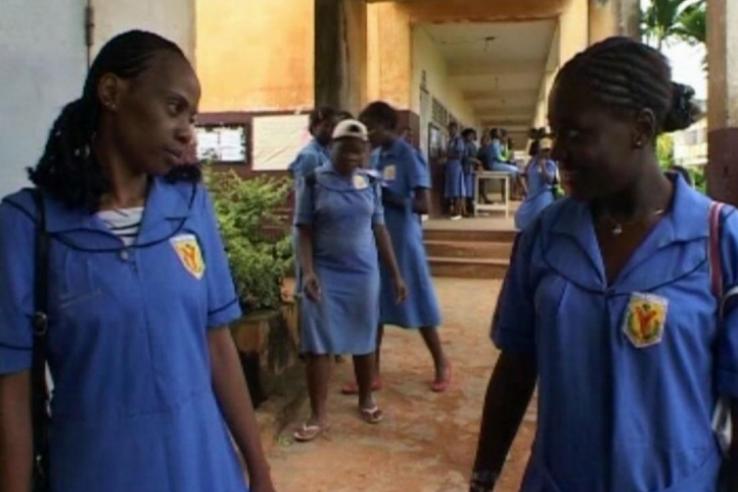
#DayoftheGirlChild: Preventing the surge in teenage pregnancies due to COVID-19

According to Save the Children’s Global Girlhood Report, 2020 risks being a year of irreversible setbacks for an entire generation of girls.
School closures and higher poverty rates caused by the COVID-19 pandemic are predicted to increase rates of child marriage and teenage pregnancies around the world. In sub-Saharan Africa alone, 608,000 additional girls are thought to be at risk of child marriage, and 542,000 additional girls at risk of early pregnancy.
Adolescent pregnancies can have negative consequences for the mother’s health as well as economic and social outcomes. Teenagers often face a higher risk of maternal mortality and miscarriage due to limited access to pre- and postnatal care. Teenage mothers are also more likely to drop out of school, leading to poorer economic outcomes and social isolation.
Many years of evaluating social policies have created a wealth of knowledge about ways to reduce teenage pregnancies. In 2018, J-PAL drafted a comprehensive Policy Bulletin outlining the key insights on how to reduce teenage pregnancies.
In this blog, we highlight key interventions that policymakers and practitioners may wish to consider to urgently reduce child marriages and teenage pregnancies in light of the pandemic.
When making decisions about marriage, sexual activity, and pregnancy, adolescent girls and other persons of influence weigh the costs and benefits of bearing children. With this in mind, interventions aiming to reduce pregnancies seek to either increase the costs or reduce the benefits of childbearing.
Two types of interventions are most relevant during COVID times to reduce teenage pregnancies: information sharing and financial interventions.
Information interventions ensure that teenagers’ perceptions of the costs and benefits of childbearing are accurate.
These types of interventions usually involve sharing information on sexual health to avoid risky behaviors, and information on the benefits of education, to keep girls in school.
- Sexual health: Evidence suggests that sexual health training that helps girls think through practical decisions associated with sexual activity such as partner selection, frequency of sexual activity, and use of protection can be effective at reducing teenage pregnancies, more so that exhortations (such as abstinence) alone.
- In Cameroon, girls received a one-hour sexual health training on sexual health behaviors. They found that the incidence of pregnancy declined by 25% (from 9.5 to 4.6 percent). This was mainly due to the intervention increasing the belief that condoms were effective and thus decreasing unprotected sexual relations.
- In Kenya, where older men are at a higher risk of HIV, providing girls with this information led to changes in partner selection: Girls chose younger sexual partners thus reducing the incidence of HIV
- Benefits of education information: In India, recruiters held three village-wide sessions annually for young women that shared information about employment opportunities in call centers available to girls with a high school diploma. In response, there was an increase in female secondary enrollment from 76 to 81 percent and girls were 5.7 percentage points (13 percent) less likely to have given birth over the following three-years. Even married women chose to delay having a child in order to take advantage of the labor market.
COVID-19, and measures to contain it, may lead to additional barriers to the implementation of information interventions. For example, if girls are out of school, it will be important to adapt sexual health training to be delivered remotely. Similarly, interventions that highlight the benefits of education may be less effective in contexts where school reopenings are uncertain. Nonetheless, the fundamental mechanism that girls can adapt their risk and benefit perceptions and thus their change behavior may still apply.
Financial incentives change the cost/benefit calculation around becoming pregnant by keeping girls in school, or by providing financial support to girls who are out of school so that they don’t have to get married or engage in transactional relationships.
- Covering costs to keep girls in school: In Ghana, where tuition is charged for secondary school, researchers randomly awarded scholarships by lottery to students with the necessary grades. Eight years later, at age 25, women offered scholarships were 10.7 percentage points (18 percent) less likely to have ever been pregnant. The reduction was driven by a 11.5 percentage points (20 percent) decline in unplanned pregnancies by unmarried women.
- Even small financial incentives that cover schooling costs can have effects on attendance and thus, pregnancies. In Kenya, researchers subsidized school costs through the provision of uniforms to upper primary school students. The subsidy led to a decrease in the rate of adolescent pregnancy by 3 percentage points, from 16 percent to 13 percent (a 17 percent decrease).
- Supporting out-of-school girls: Unconditional cash transfers may help girls avoid transactional relationships or delay marriage. In Malawi, unconditional cash transfers (UCTs), which provided girls and their parents with monthly payments, delayed pregnancy among adolescent recipients. By the end of the two-year program, adolescents whose households received UCTs were 6.7 percentage points less likely to have ever been pregnant, compared with 24.7 percent of adolescents in comparison households. The effect existed mainly among girls not enrolled in school at baseline.
- In-kind transfers may also be able to delay marriage. In Bangladesh, providing an incentive of cooking oil worth about US $16, conditional on girls remaining unmarried, helped offset higher dowry costs to parents of postponing marriage. This led to delayed marriage and childbearing among girls aged 15-17. They were 6.3 percentage points less likely to marry before 18, a 23 percent drop (from 27 percent). The provision of cooking oil also reduced the likelihood of pregnancy before age 20 by 2.9 percentage points (13 percentage points from 23 percent).
Once again, COVID-19 may affect implementation of incentive-based interventions. It may also add additional barriers and constraints to girls’ schooling and emancipation. Nonetheless, whether girls are falling pregnant due to transactional relationships or early marriage, providing them and their families with financial support can help to alleviate economic pressure that may, in certain instances, lead to early pregnancy.
While COVID-19 could take us back many years in the fight for equality and girls’ school participation, especially by increasing teenage pregnancies, it doesn’t have to. We have both the evidence and the tools to apply the evidence to new contexts, which allow us to avoid a rise early marriages, transactional relationships and other factors leading to early pregnancies
At J-PAL Africa, we want to be partners to governments in this effort to help girls who are at risk of pregnancy and early marriage. If you’re interested in exploring the application of such interventions to your context, contact us.


